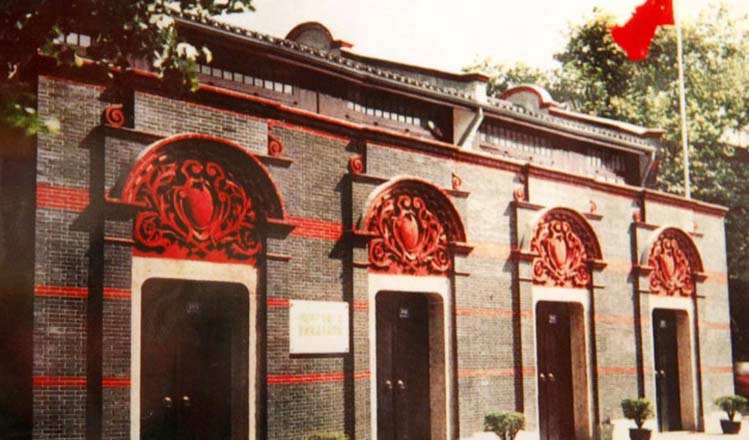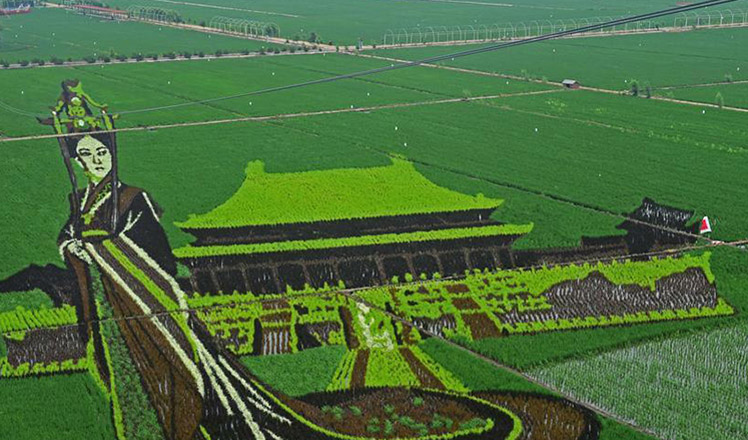Eight grand stories and many more tales
Updated: 2016-07-02 09:34
By Zhou Wenting in Shanghai(China Daily)
|
||||||||
 |
|
Liu Ruilu moved into the Wukang Building in 2006.[Photo provided to China Daily] |
Zhou Bingkui, who moved in in 1956 when he was 6 years old, says: "Although the building was designed nearly a century ago, it catered for modern living needs, including a room for a nanny, the kitchen and storerooms."
It was taken over by Shanghai Municipal Government in 1953, when it was renamed Wukang Building, and in 1994 the building, in which about 140 households live, was listed as a city-level historical building.
Contribution
Chen says the residents impressed her team with their interest in the project and with how they went out of the way to help.
"To shoot movies we set up large video cameras and lighting in their rooms and most interviews lasted for a whole afternoon. What shone through was that all these people are outstanding members of the community who feel it is their duty to make a contribution to the building."
One driving force in her own efforts in the project is the fact that she grew up in the area, she says.
"Different communities in Shanghai have strong individual characteristics, and I reckon that if you ponder someone's facial expressions for a while you can work out which community they come from. The former French Concession community is one of those with a very strong cultural inheritance."
Chen says she is heartened by the fact that more than half the 64 streets in Shanghai in which widening is permanently banned are within the former French Concession because they bear so many of the city's stories.
Li Kan, director of the administrative office of Hunan sub-district, says the strength of city renewal lies in a community's collective memory and outlook, and as the administrator of the area, the sub-district feels duty bound to keep alive the memory of the 100-year-old community.
"Often enough you can read in books about this brick or that tile that went into old buildings, or see them in museums, but only through the narratives of those who have lived in a building at different times can you produce an accurate history, one that is complete and one that the general public can relate to.
- Russian Eastern Spaceport shows mutual trust
- UK parties head for leadership battles amid Brexit fallout
- Special Syria envoy plans for July talks, August political transition
- Double suicide attacks kill at least 28 in Cameroon
- Turkey in mourning for 42 killed in deadly assault on Istanbul airport
- Brazil could dismiss Rousseff the day before Olympics ends

 Tenth birthday of the world's highest altitude train line
Tenth birthday of the world's highest altitude train line
 Crucial moments in the history of the CPC
Crucial moments in the history of the CPC
 Chibi Maruko-chan 25th anniversary exhibition
Chibi Maruko-chan 25th anniversary exhibition
 Turkey in mourning for 42 killed in assault on airport
Turkey in mourning for 42 killed in assault on airport
 China's future film stars take graduation photos
China's future film stars take graduation photos
 Russian Eastern Spaceport shows mutual trust
Russian Eastern Spaceport shows mutual trust
 Chinese Olympic team's uniforms unveiled in Beijing
Chinese Olympic team's uniforms unveiled in Beijing
 Paintings on paddy fields in Shenyang, NE China
Paintings on paddy fields in Shenyang, NE China
Most Viewed
Editor's Picks

|

|

|

|

|

|
Today's Top News
Abe's blame game reveals his policies failing to get results
Ending wildlife trafficking must be policy priority in Asia
Effects of supply-side reform take time to be seen
Chinese State Councilor Yang Jiechi to meet Kerry
Chinese stocks surge on back of MSCI rumors
Liang avoids jail in shooting death
China's finance minister addresses ratings downgrade
Duke alumni visit Chinese Embassy
US Weekly

|

|







